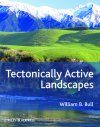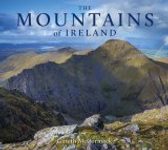![Tectonically Active Landscapes Tectonically Active Landscapes]()
Click to have a closer look
About this book
Contents
Customer reviews
Biography
Related titles
About this book
Landscapes are mainly hillslopes with streams occupying less than 10% of drainage-basin areas. This book emphasizes tectonic geomorphology of hills, and treats the network of stream channels as the connecting link between upstream and downstream parts of a fluvial system.
Contents
Contents.Preface ... x.PART 1 - TECTONIC SETTINGS AND SCOPE OF INQUIRY.1 Study Regions.1.1 Introduction ... 2.1.2 North America-Pacific Plate Boundary ... 4.1.2.1 Walker Lane-Eastern California Shear Zone ... 4.1.2.1.1 Panamint Range ... 7.1.2.2 Sierra Nevada ... 8.1.2.3 Diablo Range 12.1.2.4 Mendocino Triple Junction 14.1.3 Australia-Pacific Plate Boundary ... 16.1 4 India-Asia Plates Collision ... 20.1 5 Aegean Transtension ... 21.PART 2 - RESPONSES OF HILLSLOPES TO BEDROCK UPLIFT.2 Drainage Basins.2.1 Hydraulic Coordinates ... 26.2.2 Basin Shapes ... 27.2.2.1 Panamint Range Watersheds ... 27.2.3 Divide Migration and Stream Capture ... 30.2.3.1 Stream Capture and Changing Geomorphic Processes ... 30.2.3.2 Drainage-Basin Evolution in a Fold and Thrust Belt ... 39.2.3.2.1 Wrench-Fault Tectonics ... 39.2.3.2.2 Mt. Diablo Fold and Thrust Belt ... 40.2.4 Tectonically Translocated Watersheds ... 43.3 Hillslopes.3.1 Hillslope Model Boundaries ... 49.3.2 Late Quaternary Tectonic Deformation of the Diablo Range Study Area ... 50.3.3 Sediment Flux and Denudation Rates ... 56.3.4 Ridgecrests ... 57.3.4.1 California Coast Ranges ... 57.3.4.2 Badlands ... 61.3.5 Canyonlands 62.3.5.1 The Loop of the San Juan River ... 64.3.5.1.1 Footslopes ... 69.3.6. Cross-Valley Shapes ... 72.3.6.1 Lithologic Controls ... 72.3.6.2 Tectonic Controls ... 74.3.7 Tectonic Signatures in Hillslopes ... 77.4 Tectonic Controls on Hillslope Denudation.4.1 Sediment Yield ... 85.4.1.1 Influences of Rock Uplift ... 85.4.1.2 Lithologic Controls ... 89.4.2. Mass Movements ... 90.4.2.1 Rain, Ground-Water Levels, and Landslide Thresholds ... 91.4.2.1.1 Ground-Water-Induced Stresses in Hillslopes ... 91.4.2.1.2 Rain and Hillslope Stability ... 96.4.2.2 Landslides of Tectonically Active Regions ... 102.PART 3 - TECTONICS AND topography.5 A Debate About Steady State.5.1 A Century of Conceptual Models ... 113.5.2 Hillslope Degradation ... 119.5.3 Erosion of Mountain Ranges ... 123.5.3.1 Southern Alps ... 123.5.4.2 Sierra Nevada and Appalachian Mountains ... 128.5.4 Non-Steady State Erosion of Tectonically Active and Inactive Fluvial Systems 131.6 Influences of Erosion on Tectonic Deformation and Fault Propagation.6.1 Exfoliation ... 134.6.2 Ridgecrest Spreading ... 134.6.3 Erosional Controls of Fault Zone Partitioning ... 139.6.4 Consequences of Erosion Induced by Long-Term Plate Collision ... 141.6.5 Fault Propagation ... 150.6.5.1 Normal Faulting ... 151.6.5.1.1 Nevada Basin and Range Province ... 151.6.5.1.2 Greece ... 152.6.5.2 Thrust Faulting ... 156.6.5.2.2 New Zealand ... 156.6.5.2.2 California ... 166.7 Tectonic Geomorphology of a Plate Boundary.7.1 Walker Lane-Eastern California Shear Zone ... 177.7.1.1 Panamint Range ... 182.7.2 Sierra Nevada Microplate ... 188.7.2.1 Present Topography ... 188.7.2.2 Geomorphic Responses to an Uplift Event ... 189.7.3 Mendocino Triple Junction ... 203.7.3.1 Marine Terraces ... 203.7.3.2 Stream Channels ... 212.7.3.2.1 Independent Variables for Coastal Fluvial Systems ... 212.7.3.2.2 Fluvial System Responses to a Shifting Plate Boundary ... 215.References Cited ... 227.Index ...
Customer Reviews
Biography
William B. Bull is an applied geologist educated at Colorado and Stanford Universities. He worked 12 years for the U.S. Geological Survey as an engineering geologist and groundwater hydrologist and then changed career goals by moving to the University of Arizona where he taught geomorphology for 28 years. He continues to study how the hills and streams of mountain ranges respond to uplift and global climate changes of the past million years.



































